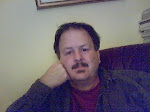What is so hard about being creative? What obstacles get in our way? Well, one obstacle is that we limit our own creative spark by falling into habitual patterns. Last time I talked about the patterns created by our living spaces. Another example of one of these patterns in how we look at the world; how we actually see it. A few years ago, while sitting in meditation looking out at a large Maple tree outside my window, I started noticing the leaves more deeply. I noticed their shape replicated over and over a gain. Each had veins that were visible in the sunlight. After a few minutes of meditative breathing the shape of the blue sky between the clusters of leaves garnered my attention. Rather than discuss my personal observations, I prefer to help you have your own direct experience. Try the following exercise.
- Go outside and sit where you can observe a tree from a close enough distance to see individual leaves and yet far enough away that you can see the whole tree.
- Sit comfortably (so that you can maintain your position for 15 minutes) with your back straight in view of the tree.
- Breathe in and out naturally through your nose with your mouth closed. Feel yourself relax as you breathe.
- Bring your gaze comfortably to the tree.
- Observe the individual leaves, their movements, their shapes. What do you notice about the leaves? How do they change over time?
- Observe the spaces, the larger gaps between clumps of leaves. What do you notices about the spaces? How to the spaces change over time?
I won’t get specific about what I observed in the above exercise but I will comment that there are differences in the way we perceive "things" or objects, and how we perceive the "space" between things. We, in our society at least, have acquired the habit of dividing the world into discrete objects which are separated by boundaries and distances.
How does this habit limit our creativity? By limiting our modes of perception, pinned down by habitual concepts we reduce the variety of perception of the way things are. For instance you and I perceive water as something to drink or something to wash with. However a fish perceives the water as home and as something to breathe. By allowing both perceptions the artist can discover whole new ways to create, whole new subjects to explore.
The Impressionists painted light because they trained themselves to not just see the light on the objects but also to see light as the object. That is they trained themselves to not differentiate between a flower and the light that was striking the flower. With this relaxation of a specific pattern of seeing, they created an entire artistic movement called Impressionism.
For centuries, musicians saw music as a series of notes played on a musical instrument separated by spaces called "rests." In one way a rest was seen as an object because it was indicated in a score by a symbol rather than by distance between notes. However there was a definite bias between notes and rests because musicians really saw the rests as pauses between the music. All songs were composed mainly by notes in rhythmic durations with an occasional rest to make non rhythmic spaces. In 1952 John Cage composed 4' 33'' which is four minutes and thirty three seconds of a musician not playing an instrument. This piece actually has three movements but in total there are no notes played. Although one might see this as an experiment in silence it might just as well be an experiment in environmental music where the background noise is the music; either way, a new concept in composing and a new way of perceiving music was inaugurated.
How can we break out of our habitual patterns of perception? More on that next time.





Especially find the silence/music/John Cage explanation interesting.
ReplyDelete